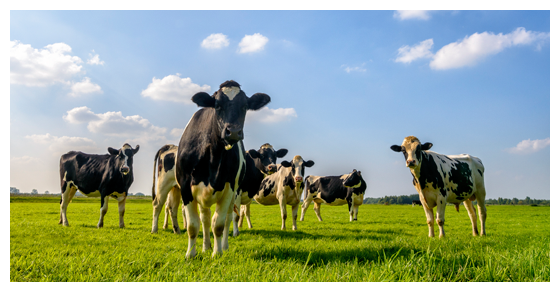
Even Small Farmers Need Crisis Communication
Undercover video exposés no longer are only in the realm of 60 Minutes and multinational corporations; smart phones and YouTube mean activist groups and small businesses, even small farmers, can be caught up in the kind of crisis communication that used to be a problem only for big business. But small farmers don’t have the same kinds of public relations resources that corporations have. How can a small business owner survive an undercover video crisis? This article tells the story of one such small farmer and how he managed to survive a big crisis for a small business.
Gary Conklin, a fourth-generation family farmer, faced a huge threat to his business in 2010 when activist group Mercy for Animals posted a shocking video titled “Ohio Dairy Farm Brutality.” The four-minute video showed several disturbing instances of abuse, including cows being struck with a crowbar or stabbed with pitchforks. Almost all of the abuse was doled out by one of Conklin’s farmhands. As soon as Conklin found out, he issued a statement and investigated the video. When the abusive employee showed up for work the next day, he was met by Conklin and the sheriff. Not only was he fired, but he also was arrested and eventually pleaded guilty to multiple counts of cruelty to animals. This quick and decisive corrective action was a first step in salvaging the farm’s reputation.
However, this was not the end of the crisis for Conklin Dairy Cattle Sales. In one video scene, Conklin himself was seen kicking a cow in the neck. Not only was the reputation of his family business at stake, but he also was in danger of being charged with a crime himself. To save his business, he had to communicate that what was shown on video was not the abuse it appeared to be. His method for achieving that objective is a model for small farmers or other small businesses facing similar situations.
Conklin’s crisis communication method consisted of redefining the apparent act of cruelty. First, acknowledging that he was truly the person in the video kicking the cow, he divided the possible explanations into two categories: animal care or animal abuse. To defend his perspective that it was actually animal care, he further clarified the kick in two ways: it was normal, not abnormal, and it was an act of concern, not an act of cruelty. To add legitimacy to both of these characterizations, he gained endorsements of his position from outside third parties. These third-party endorsements were critical because of the relative ignorance of his publics.
Americans increasingly are removed from their agrarian roots. From 1900 to 2000, for example, the segment of the American workforce in agriculture declined from 41 percent to just 1.9 percent. This increased division between farm and non-farm America has led to a lack of public understanding about farm animal care and management practices. This means that with videos like the one produced by Mercy for Animals, whatever explanation is attached to the video (in this case “animal cruelty”) is likely to be accepted by publics ill-informed about agricultural practices. In addition, animals that are part of Americans’ everyday lives tend to serve the role of companion rather than food, transport, or labor. So if kicking a dog or cat in the neck would be appalling, then (for many Americans) kicking a cow in the neck is appalling as well. As a result, Conklin’s redefinition of the act of kicking the cow faced significant obstacles.
Conklin’s definition of the kick as normal concern for a farm animal was based on an adage dairy farmers live by: “A down cow is a dead cow.” The animal is so large that if it stays down and will not get up, its muscles can quickly deteriorate and lose the ability to ever get the animal up again. Consequently, Conklin defined his action as normal (not secret) and beneficial (not cruel) for the animal’s well-being. By itself, of course, this explanation might seem thin to non-agrarian publics, so Conklin found some support. Veterinarians experienced in large-animal care watched all of the video captured by Mercy for Animals and confirmed that Conklin had acted appropriately to bring the “downer” cow back to her feet.
The Union County prosecutor, presenting the case to a grand jury, consulted four different veterinary experts who all agreed that sharply kicking the cow was an appropriate act. In his statement about dismissing charges against Conklin, the prosecutor blamed Mercy for Animals for editing the video to imply that Conklin was being as abusive as the farmhand who was fired. In fact, the prosecutor said, the unedited video showed that “in context, Mr. Conklin’s actions were entirely appropriate.”
The crisis communication also included Conklin inviting the Union County Health Department, Union County Sheriff’s Department, Union County Humane Society, and Ohio Department of Agriculture to tour his facilities. These tours resulted in endorsements that the cattle were healthy and the premises were “in good shape.” Moreover, in addition to firing the abusive employee, Conklin took several other corrective actions: he instituted a new policy for more thorough background checks on employees (even though his operation had fewer than 10), began conducting employee classes, updated employee handbooks about proper animal handling techniques, and required employees to report any violations they observed.
The successful resolution of this crisis for one small farmer, after the obvious first step of firing an abusive employee, involved three steps to redefine an act that at first glance looked abusive:
- Acknowledge the act (after all, the kick was right there on video).
- Redefine the act as one that is consistent with publics’ expectations.
- Invoke third-party support for the redefinition.
The potential for this approach to work isn’t limited to agriculture, of course. In any situation where publics are not well-versed in the day-to-day operations of a small business, redefinition following these steps might be a productive answer to allegations of wrongdoing.

